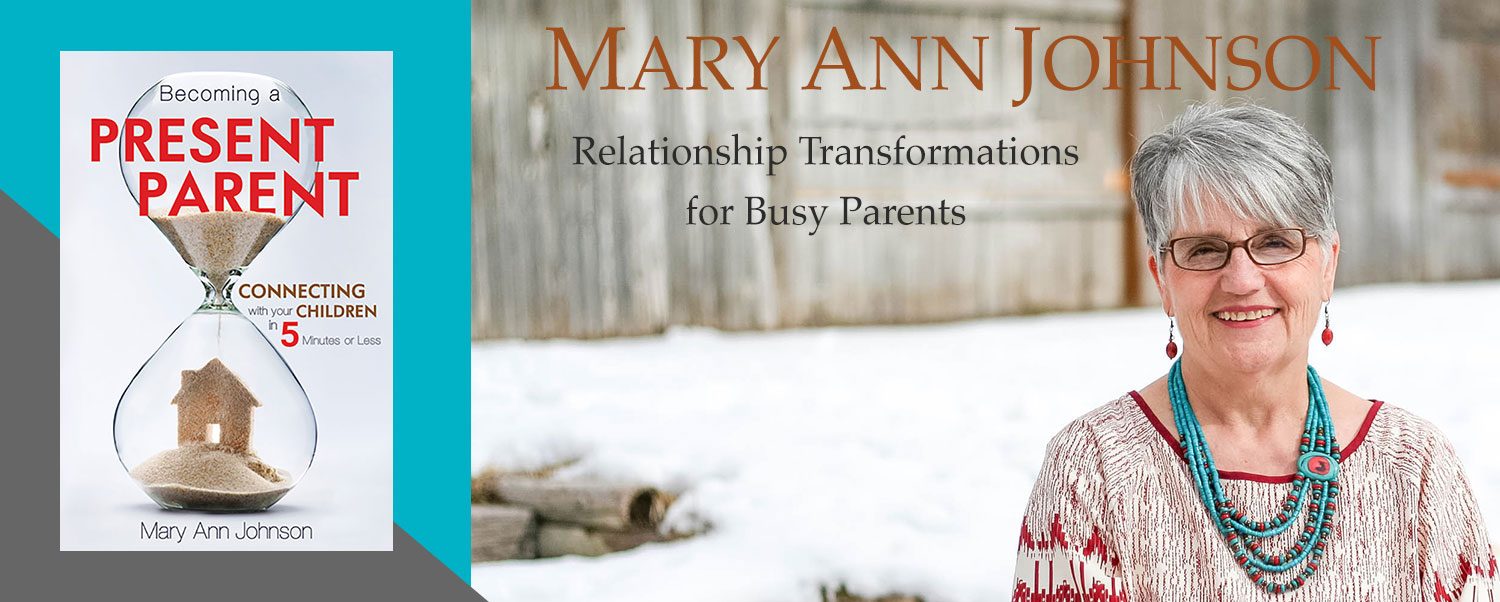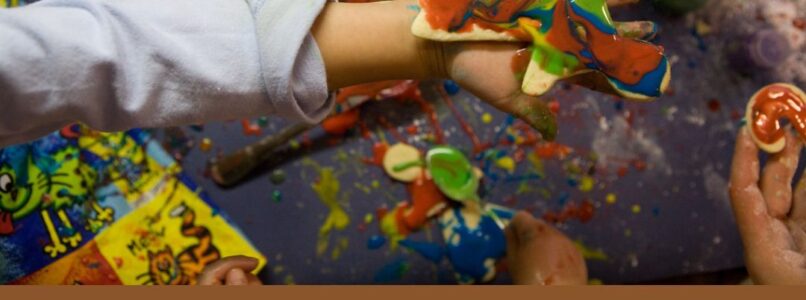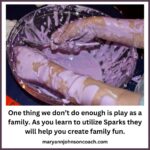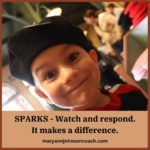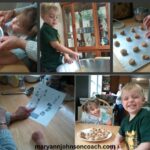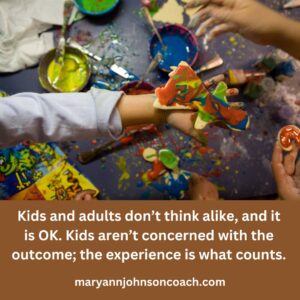 In the article published on Oct. 13, I told you I LOVE using sparks and that in the coming months, I would share experiences I have had with them that can Spark you with bonding activities for your family.
In the article published on Oct. 13, I told you I LOVE using sparks and that in the coming months, I would share experiences I have had with them that can Spark you with bonding activities for your family.
As promised, here is a spark I followed with two groups of children. However, I want you to notice something else as important as following a spark or igniting one. Often, we let our expectations get in the way of learning and fun. As I said in my book, Becoming A Present Parent, “Keep expectations from getting in the way of enjoying your family…Keep the perfect from becoming the enemy of the good. The point is not what you teach, or how well it looks, but being together while you’re Present.”
Because this article would have been excessively long with both experiences, I have created two articles. Each tells one story, and next week I will tie them together.
Story 1
I befriended a woman in my neighborhood with three daughters and a live-in nephew. The children and I became buddies. I took them to church, visited often, and we had a weekly activity night. They loved it, and I learned things about working with children as we played together.
When I moved away, I stayed connected with the family. Eventually, we were on social media together. They hadn’t forgotten the bond we forged when they were little. In the last couple of years, I have made a graduation cake for Kyle and a quinceañera cake for Daniela.
At the time this activity took place, the kids had been begging to make cookies, the spark. Because these little guys were 7, 4, 4, and 2 and could be a handful, I had been putting it off. Fortunately, I didn’t wait long enough for the spark to die.
During the cookie activity, nothing went as planned. The kids began fighting from the get-go. I sat them down and told them the few rules I have when I cook – no fighting, take turns, and don’t criticize each other. They didn’t hear a word I said, and as we began again, the fighting renewed. I retired to the living room, and as I went, I said, “Call me when you’re ready to cook.” After a good five minutes, they saw I was serious about the fighting and came and got me.
We talked about measuring ingredients – how many ½’s are needed for one cup, etc. We talked about teaspoons and tablespoons. They began measuring, as I reminded them frequently that they were in charge of themselves and not each other. We learned about baking and how to work as a team and get along. : )
By the time we finished, the two-year-old had tasted the shortening, one of the 4-year-olds had been in the flour to her elbow, oatmeal was all over the table, and the other 4-year-old was eating the sugar. Patience! I mentally reminded myself that kids and adults don’t think alike and that fun and learning were the objects here.
Eventually, we rolled balls of dough and flattened them on the pan, except for one of the 4-year-olds. She was creating sculptures. I eventually parceled her dough to everyone else so we could finish baking them. She was not a happy camper.
While the first batch was in the oven, they all deserted me for the living room and their mom, who had company. As I cleaned up the gigantic mess, I kept repeating, “Kids and adults don’t think alike, and it is OK. Kids aren’t concerned with the outcome; the experience is what counts. Adults feel frustrated when they enter a project with adult expectations, and it doesn’t meet those expectations. What kids really want is your time and to know you cared enough to plan.” I felt the frustration going down.
When the first batch finished baking, the kids were back in the kitchen, ready to take them off the pan. Very few made it off in one piece. By the time they were all baked, we had a plate of large crumbs and a kitchen full of happy children. We sang a bunch of songs and ate the crumbs, which they were delighted with. They were excited about the next activity. It was going to be Play-Doh! Yup, the spark I saw as we rolled the cookie balls.
They had tons of messy fun, learned a few things about measuring cups and spoons, and how to work as a team, and felt our bond increase.
The fact that we stuck with the project made it a success for them.
Tune in next week and I will share story 2 and tie them together for you – how can you tell if an activity is successful? : )
